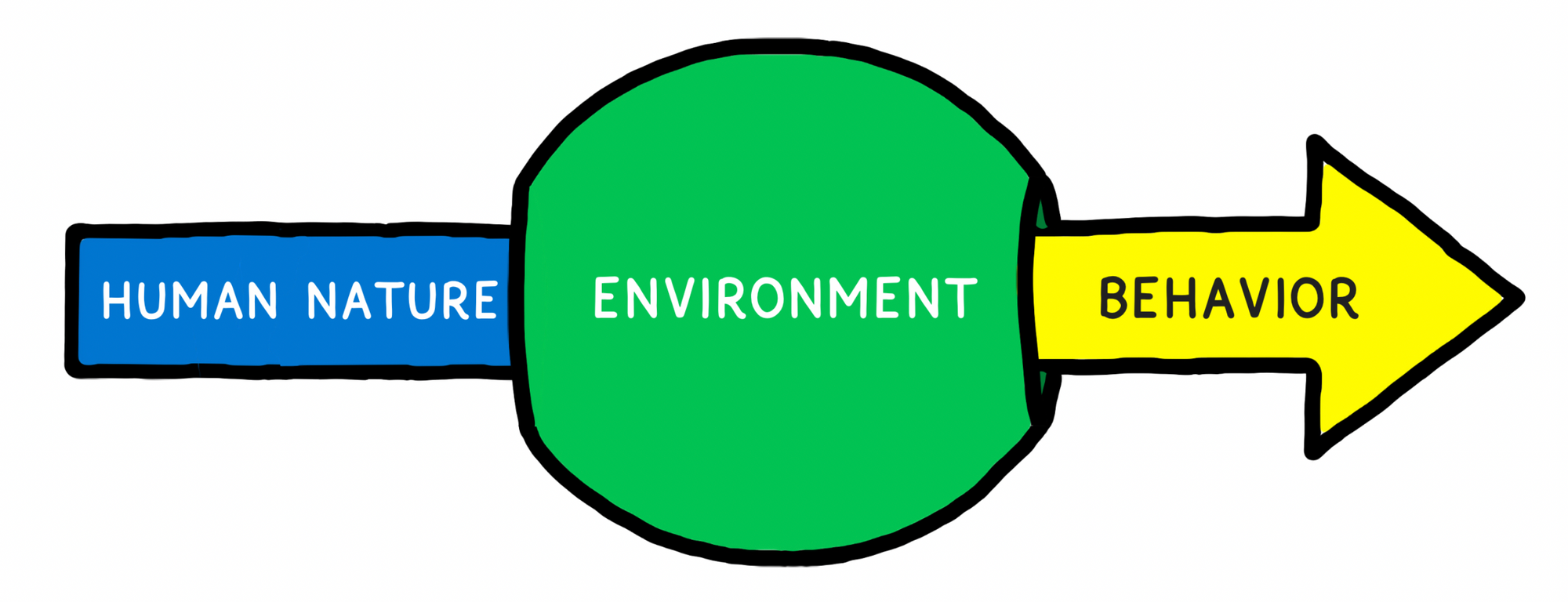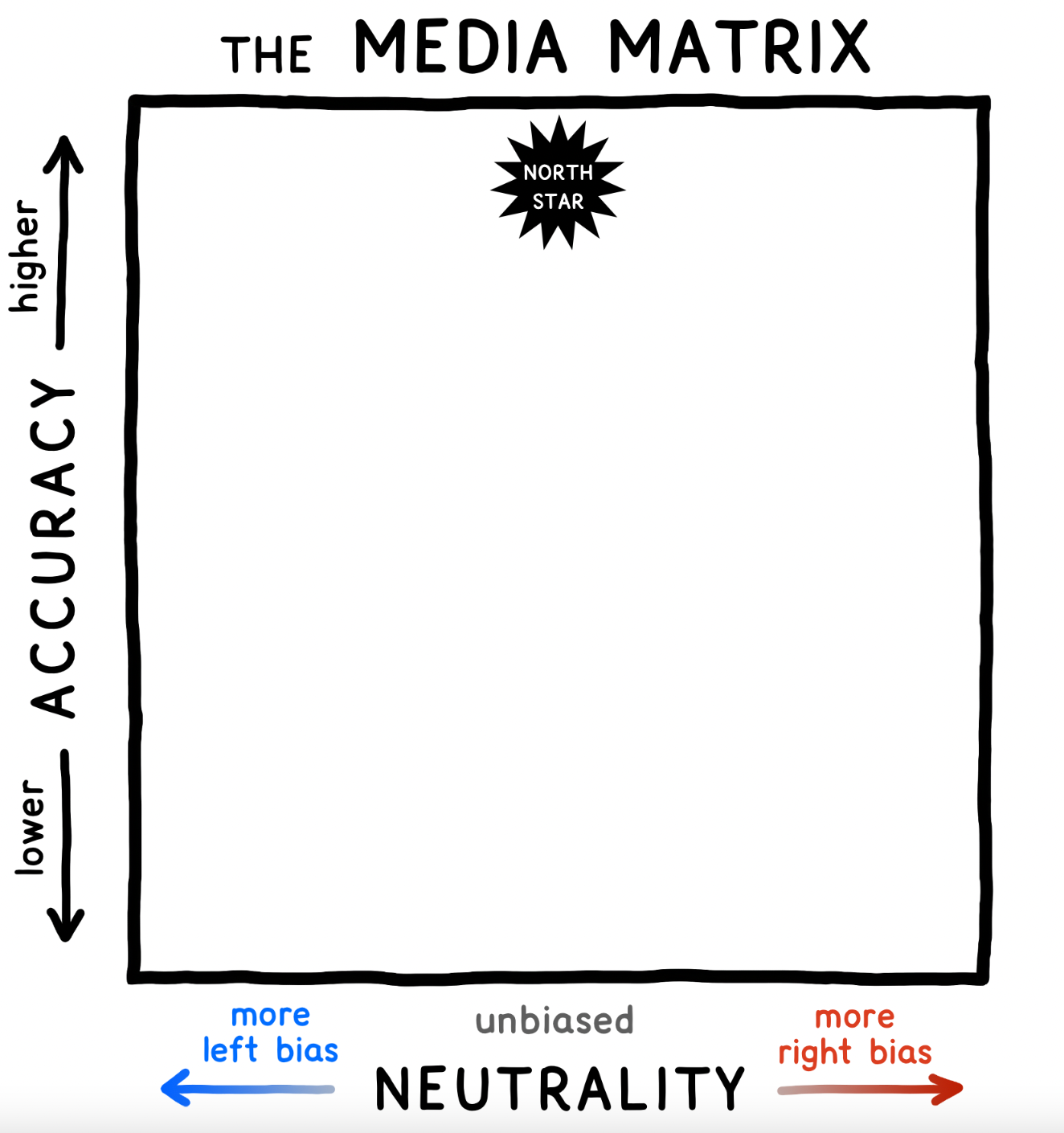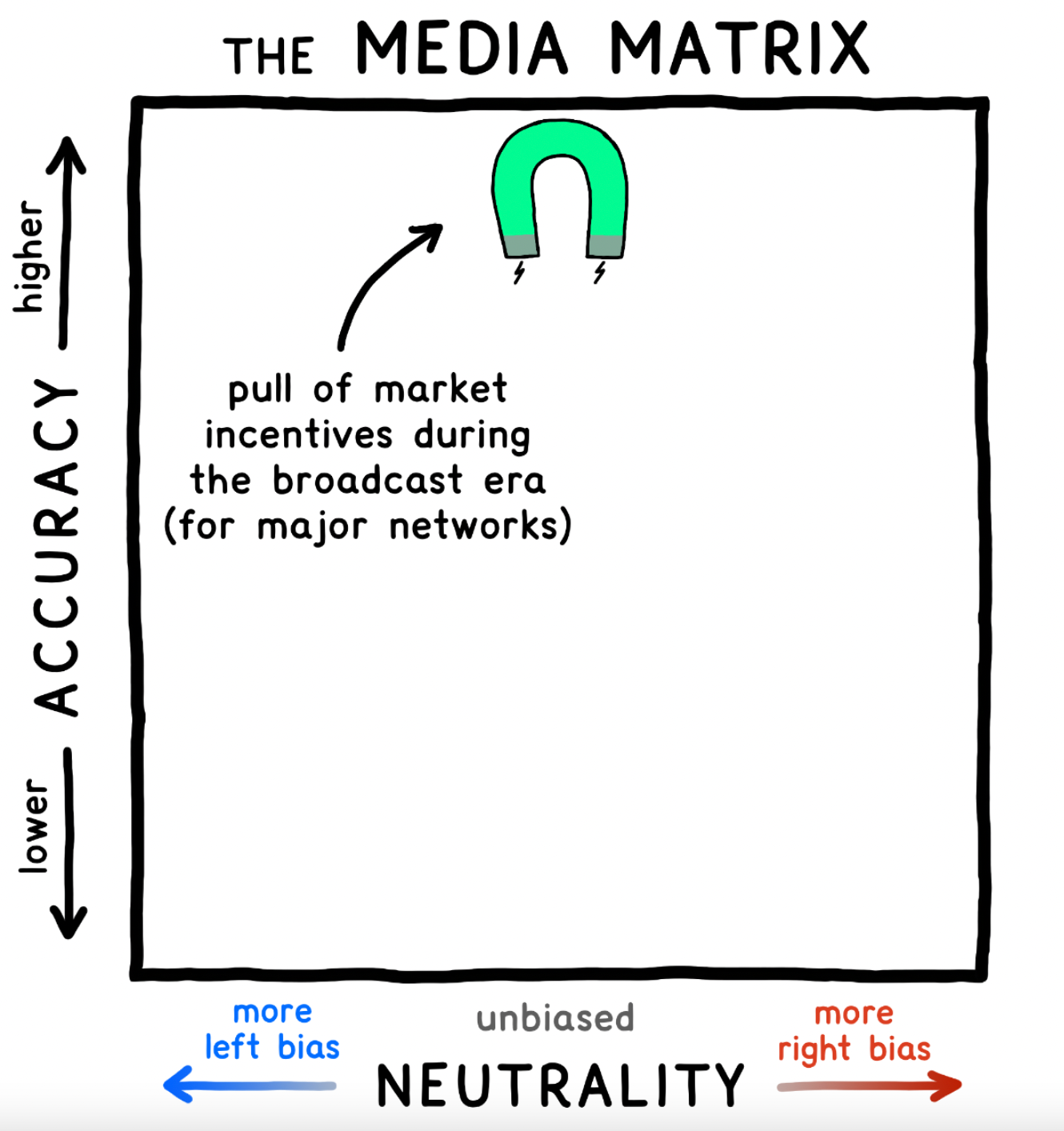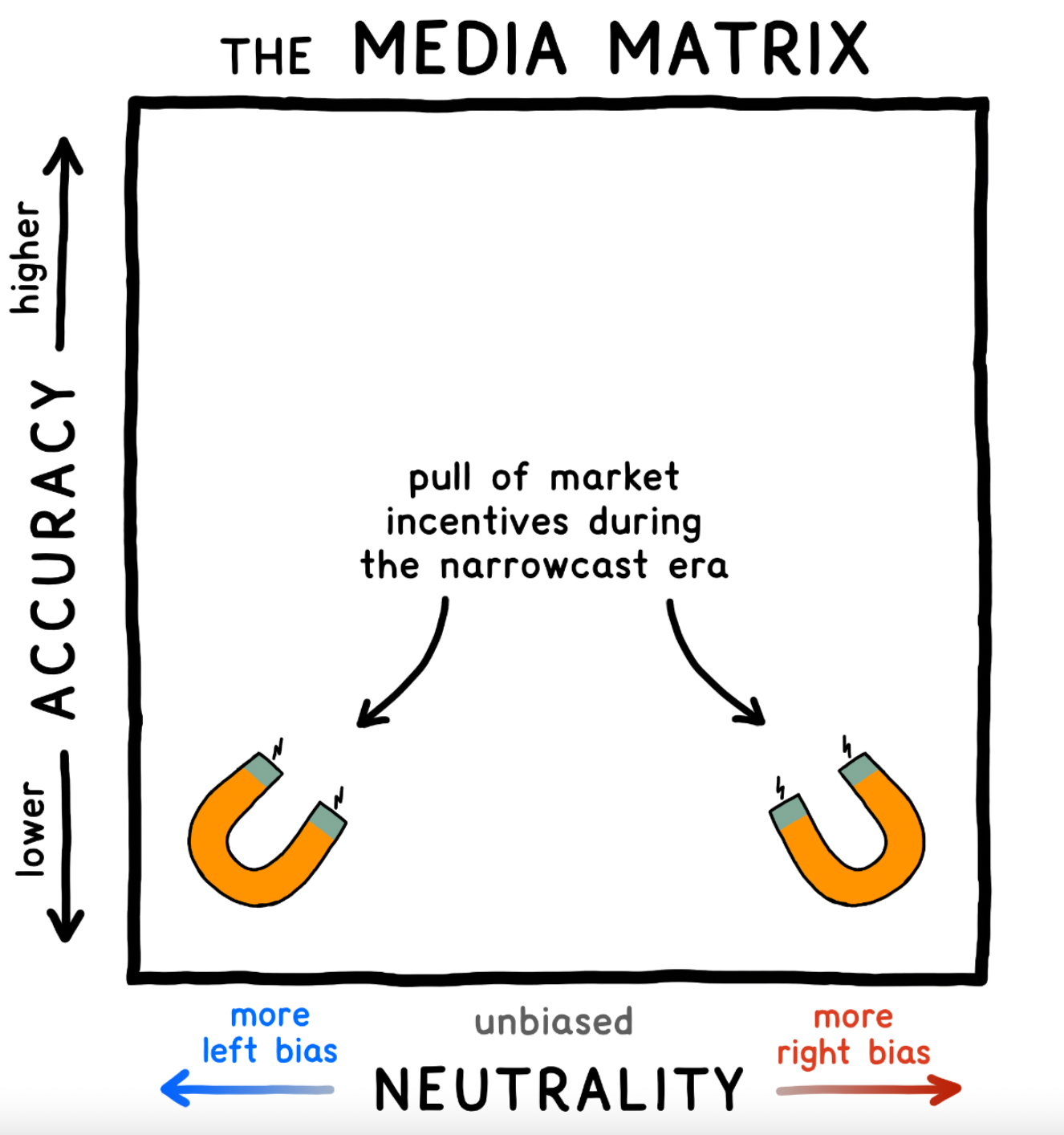On media polarization
This post is part of a series on Tim Urban’s book, What’s Our Problem? a self-help book for societies.
--
To explain our current political environment, Tim Urban posits that human nature is fundamentally constant—we’re just evolved apes often controlled by our limbic system i.e. the primitive part of our brains.
So if there are large changes in human behavior, and human nature hasn’t changed much, it's reasonable to assume that the behavioral changes are the result of changes in our environments: our physical environment, cultures, laws, beliefs, norms, and so on.

One such environmental change over the last few decades is within our media ecosystem. That’s the focus of today’s post.
Consider the Media Matrix below. All media companies and journalists can be plotted somewhere in the box, based on how disciplined they are about the accuracy and neutrality of their reporting.

The top middle represents the North Star, where a media source does its best to present the truth with as little bias as possible. As we move left or right, neutrality is sacrificed in favor of cherry-picking and omitting facts for the team. As we move down, accuracy is lost and stories are twisted, logical fallacies become commonplace, and cognitive biases are preyed upon.
In the 1980s, most Americans got their news from ABC, CBS, or NBC. These networks were incentivized by market forces to report with as much accuracy and as little bias as possible. They were trying to appeal to the entirety of the population and knew that a loss of trust would directly result in a loss of viewers.

In addition, they were bound by the FCC’s Fairness Doctrine “which required anyone who held a broadcast license to present controversial issues of public importance in a fair and balanced manner, giving airtime to contrasting viewpoints.”
But then, through the 1990s and 2000s, the media landscape changed dramatically in a way that most media companies had no incentive to shoot for the North Star anymore. What happened?
One reason is the abolishment of the Fairness Doctrine after it was deemed to be in conflict with the freedom of the press clause of the First Amendment. Until I read the book, I had no idea this happened but it seems pretty consequential considering the doctrine’s objective to maintain fairness. One could argue that it wouldn’t have mattered anyway with the decline of broadcast media, yet I would counter that this historical precedence likely stopped any similar legislation for the new era of media from gaining traction.
Another major reason was the mass adoption of cable TV. While it had been around for several years, it wasn’t until the 80s and 90s that cable TV became widely accessible. With it came 24-hour news channels, starting with CNN. It was a classic case of technological disruption. With nothing to lose relative to the established channels, cable news networks could experiment and try all kinds of new things to fill programs for every hour of the day. As Fox News and conservative radio gained influence on the political right, political satire shows like The Daily Show became popular on the political left.
Put simply, the era of the broadcast was replaced by the era of narrowcast media, where market incentives pushed companies to cater to targeted, homogenous sections of the population at the expense of neutrality and accuracy.

To make things worse, media companies have mastered the art of appealing to the part of our brains that love junk food and reality TV. They feed us click-bait headlines and turn politics into cheap entertainment, or as Urban hilariously calls it “The Real Politicians of Washington D.C.” All of this is exacerbated by social media, which enables stories to spread like wildfire, particularly negative ones.
So what should you do? Stop watching cable news or consuming content clearly designed to elicit strong responses. If you’re truly politically inclined, get involved in local grassroots politics. Listen to long-form podcasts that explain someone’s detailed political positions. Look beyond the short headlines and breaking news and Twitter trends to figure out which causes you actually care about and want to contribute meaningfully towards. If that’s not your thing, that’s totally fine.
But at least now you can recognize that what you’re into isn't politics but rather a political reality show that you can take a little less seriously. Maybe the next time you read a politically charged headline or watch a short clip, you’ll feel less enraged or triggered. If enough of us do that, I think it’ll be for the better.